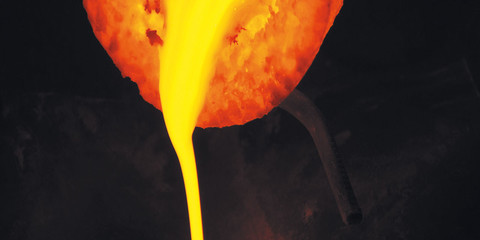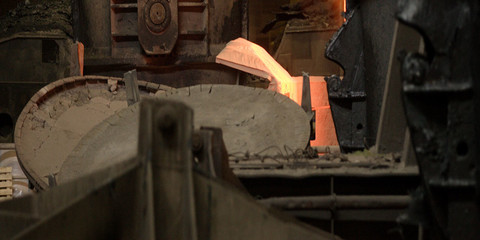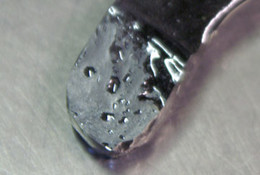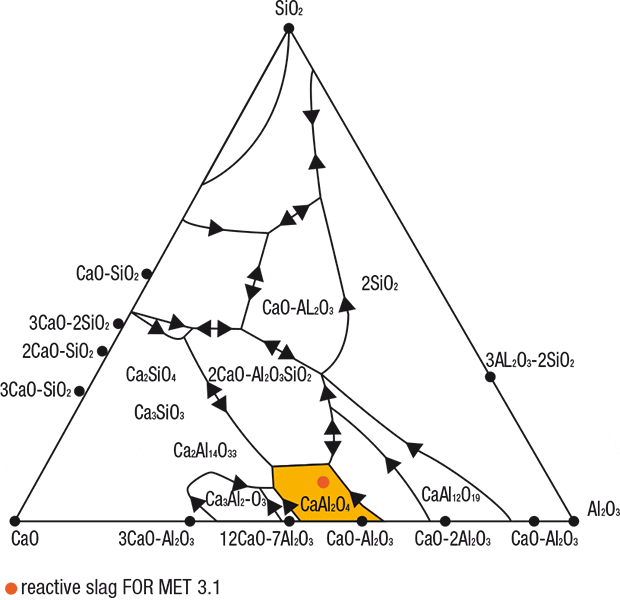Grundlagen
the main chemical components of slags and cover powders, conform to the quadrunary system CaO-MgO-Al2O3-SiO2. Each component has a distinct influence on how the cover powder works:
Al2-O3: Alumina is a neutral component. In this application it is not an independent phase but rather forms new phases together with the other components. This quite different to the Al2O3 that is produced during when aluminium is lost through melting, when it becomes a major part of the non-metallic inclusions (e.g. clogging).
CaO: The component CaO stipulates the take-up potential of non-metallic inclusions. The surface tension and the viscosity of the molten cover powder layer are defined by this component in a secondary metallurgical way. Within this system CaO has the lowest oxygen partial pressure and is highly unlikely to release oxygen into the steel cast.
SiO2: Silicic acid is the sour component within this system and is commonly used as cover powder in the form of rice ash. This component has a high oxygen partial pressure, i.e. the oxygen is easily released into the steel cast. Sour casts are highly viscous and thus have poor pick-up potential.
MgO: A certain rate of MgO reduces the refractory wear in the tundish or the steel ladle by lowering the concentration differential between alkaline refractory lining and slag cast. An unavoidable side effect is the increased viscosity of the cast layer.



